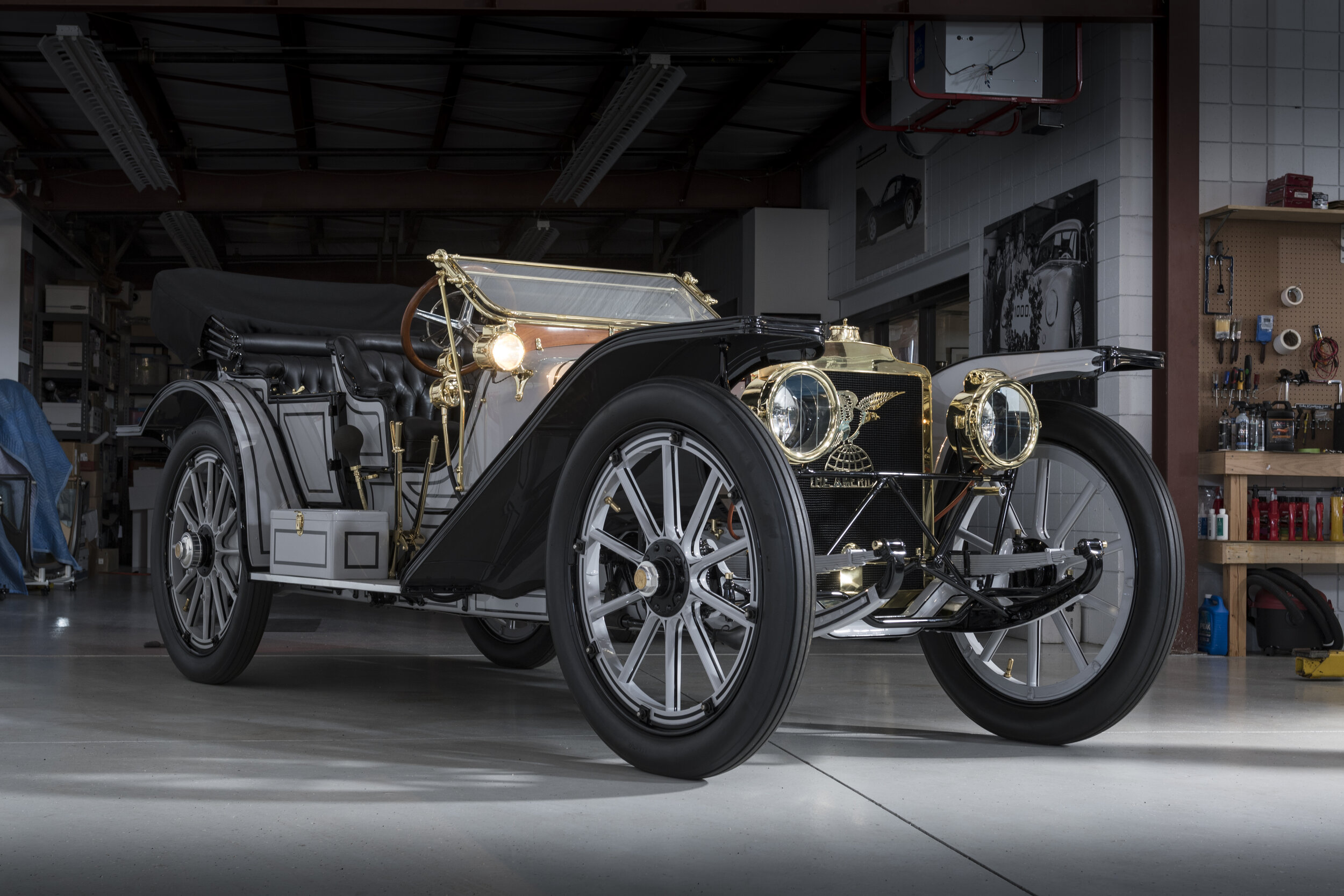1912 Packard "Model 30 7-Passenger-Touring"
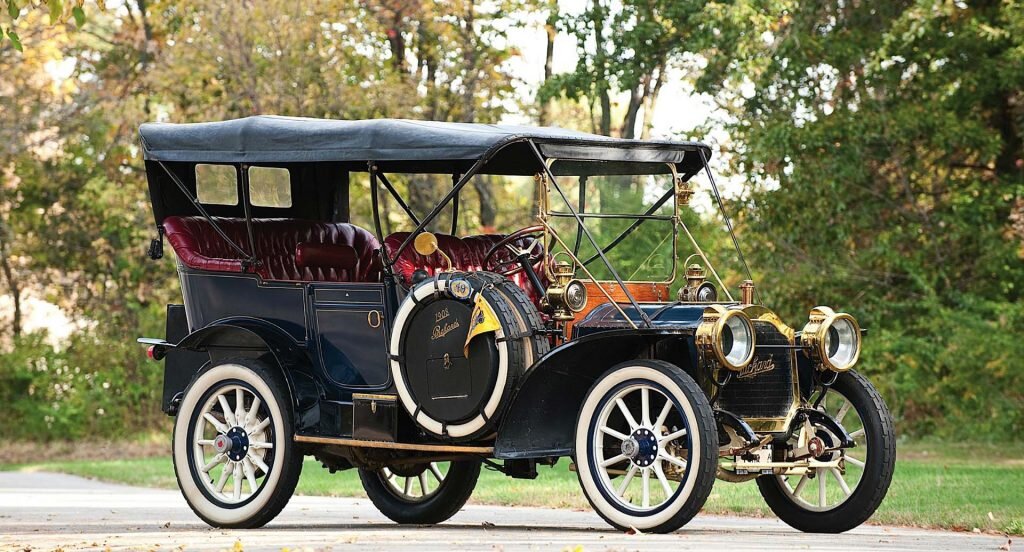
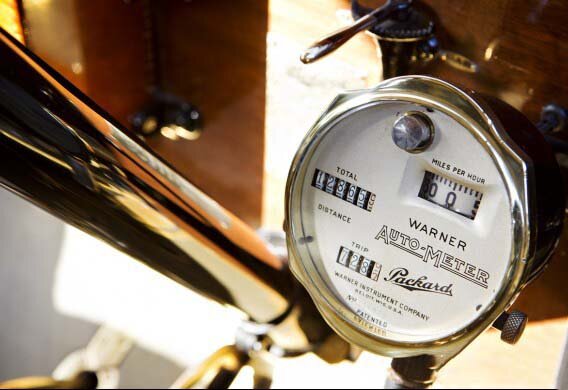
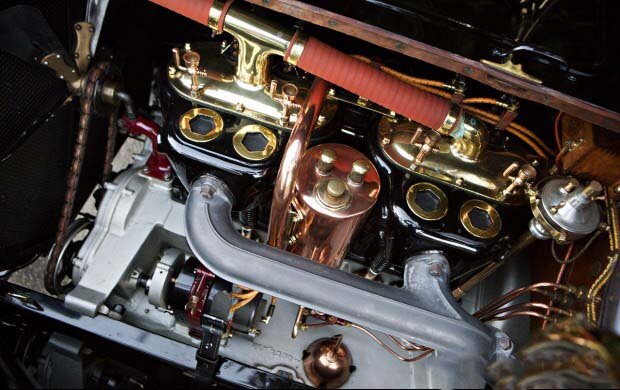
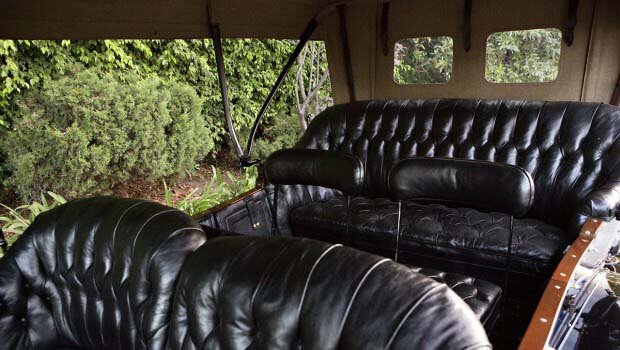
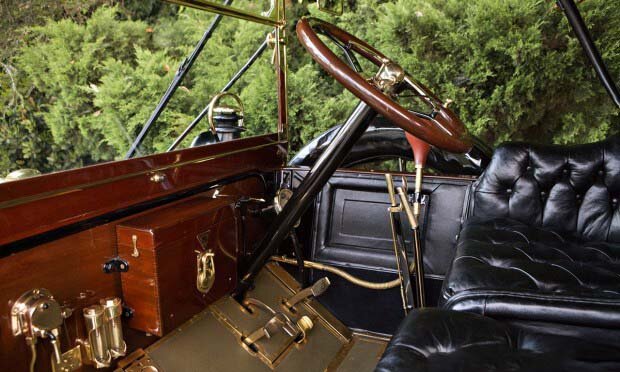
Lights: Packard Brass Acetylene Headlamps and Sidelamps
It was not common for an automobile company to offer a car complete with their own headlights. The American Underslung also shown on display was delivered to its first owner with beautiful brass adorned headlights, though they were made by headlamp manufacturer Grey & Davis, not by American. This is one way Packard sought to set themselves apart from other high end marques. As acetylene gas was still the frontrunner in terms of headlamp technology in 1912, it gave Packard the opportunity to create some of the most artful designs to date, leading to bigger and more effective lamps that matched the design of their cars wonderfully. A close look at this Model 30’s headlamps will reveal a trademark along with an engraved “30” noting the headlamps were specific to this car.
Very few Model 30s are known to exist, and this example is believed to be the only remaining example with seven-passenger coachwork. Its second owner was Phil Hill who, while still racing sports cars all over the world, indulged his passion for car restoration. He and Bob Mosier restored this car between 1969 and 1972. Hill showed it for the first time at Pebble Beach in 1976, where it won its class; winning its class again at Pebble Beach in 1999.
From their establishment, Packard aimed to produce the finest motorcars ever seen, and the Model 30 quickly helped to solidify the company as one of the finest automobile makers on the planet.
James Ward Packard was one of the first 21 customers to buy the all new Winton Runabout in 1898, a car ahead of its time upon its release. Mr. Packard enjoyed his Winton, which was similar to the Winton seen here on display, though he had a few issues. A mechanical engineer, Packard believed he could build a better horseless carriage than Winton. Packard went to Mr. Winton to voice his complaints and offer suggestions for improvement, to which Winton challenged Packard to do better. Less than two years later, the first Packard was built.
In 1907 Packard introduced its Model 30, which would remain in production until approximately 1912. The Model 30 was a very important car for Packard and was a top seller for many years, even after it was joined by a smaller Model 18 in 1909. The new engine was designed to carry the long, large, and heavy coachbodies which were increasingly popular with wealthy customers. The engine, itself, required a longer wheelbase chassis to accommodate its size. The drive was through an unusual expanding band clutch with a three-speed transmission to a live rear axle. This setup favored the prior configuration of transverse leaf springs which had been abandoned the previous year with the Model S. Now, the front and rear was given semi-elliptical leaf springs. Redundant braking on the rear wheels was provided by both expanding shoe and contracting band brakes.
Specifications
Engine: 7.1L Inline 4-Cylinder T-Head (431.9 C.I.)
Horsepower: 30 @ 650 RPM
Transmission: 3-Speed Manual Transaxle
Brakes: 2-Wheel Mechanical Brakes
Suspension:
I-Beam Straight Front Axle with Semi-Elliptical Leaf Springs
Live Tubular Rear Axle with Three-Quarter-Elliptical Springs
Lights: Packard Brass Acetylene Headlamps and Sidelamps



